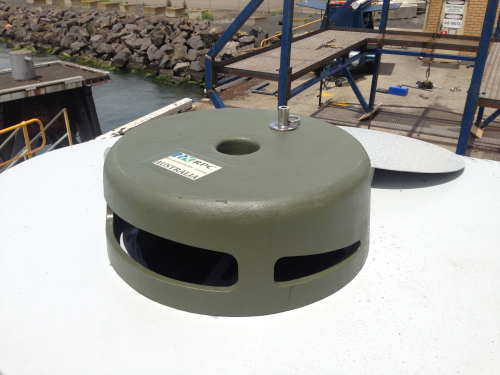
For the first time in 100 years the World War I Australian submarine, HMAS AE2’s (the Silent ANZAC) conning tower hatch was opened in June 2014. The wreck is intact, sitting upright in 73 meters of water in the Sea of Marmara where it fell in battle on 30 April 1915.
Australian-based advanced composite manufacturer and composites specialist, RPC, lent its expertise to develop a secure protective cover to be placed over the open conning tower hatch as part of an initiative of the AE2 Commemorative Foundation. RPC Technologies undertook the work on a pro bono basis, with the design, specialist fabrication and manufacturing being undertaken at its Corio facility.
The cover, specially designed and manufactured by RPC in glass reinforced plastic (GRP), fits over the open conning tower hatch to prevent unauthorised entry to the submarine. The hatch had to be strong, light and securable to prevent unauthorised entry. It also had to have exceptional anti-corrosion properties to contend with both the rigours and sensitivities of a marine environment at a depth of some 73 metres.
RPC Executive, John O’Brien points to the “impressive strength to weight characteristics of composite materials which made GRP a natural choice for the hatch. GRP also offered the lifelong corrosion resistance needed in an underwater environment as well the strength to properly secure the vessel from unauthorised entry”.
“Composite materials like GRP give us the ability to produce complex shapes to enable multiple components to be moulded into one part which also helps to save on weight and helps reduce manufacturing costs”, says RPC’s James Zegir.
There were also special design requirements to shape and provide slots within the new hatch to allow for normal water current flow and to provide unimpeded access for marine creatures.
The ‘Silent ANZAC’ project has been an extraordinarily successful collaboration of experts, all volunteers, drawn from Australia, USA and Turkey.





